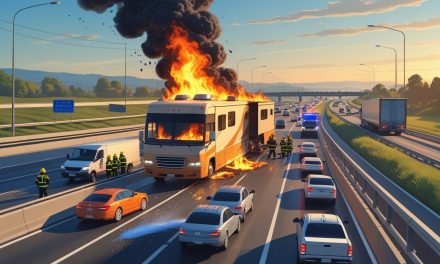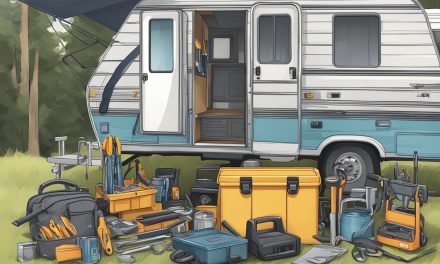Would you like to save this article?
5 Spiders You Don’t Want To See At Your Next Camping Trip
Camping is all about fresh air, campfires, and… terrifying eight-legged roommates? That’s right—while most spiders are harmless (and even helpful), a few can turn your wilderness retreat into a real-life horror movie. Some spiders pack venom potent enough to send you to the hospital, and the last thing you want is to discover one in your sleeping bag. From Australia’s deadly funnel-web to America’s flesh-eating recluse, these creepy crawlers are the ultimate camping buzzkills. So before you zip up that tent, let’s meet the five spiders that deserve a permanent “Do Not Disturb” sign.
1. Sydney Funnel-Web Spider – Australia’s Nightmare Fuel
📍 Where You’ll Find It: Eastern Australia (especially near Sydney)
☠️ Venom Rating: 10/10 – One of the deadliest spiders on Earth
The Sydney funnel-web spider isn’t just scary-looking—it’s armed with venom so toxic it can kill a human in under an hour. Its fangs are strong enough to pierce fingernails, and unlike most spiders, it stands its ground when threatened (translation: it’s not running away). Thankfully, Australia has antivenom, and no deaths have been reported since its introduction in 1981. Still, you don’t want to test that statistic.
Fun Fact: These spiders can survive underwater for up to 24 hours, so don’t think you’re safe taking a dip.
If this spider shows up at your campsite, just pack up and move to a different continent. Australia has enough dangers already.
2. Brazilian Wandering Spider – The One That Roams Into Your Boot
📍 Where You’ll Find It: South & Central America (especially Brazil)
☠️ Venom Rating: 9.5/10 – Neurotoxic + “Uncomfortable” Side Effects
This spider doesn’t wait for you in a web—it actively hunts at night, often sneaking into tents, shoes, and backpacks. Its venom causes extreme pain, paralysis, and in some male victims, prolonged, painful erections (yes, really). The Guinness Book once called it the “world’s most venomous spider,” though deaths are rare thanks to antivenom.
Fun Fact: It’s also called the “banana spider” because it sometimes hitches rides in fruit shipments.
If you wake up with this spider in your sleeping bag, forget first aid—just start writing your will.
3. Black Widow – The Classic (But Still Deadly) Campsite Creeper
📍 Where You’ll Find It: Americas, Australia, parts of Europe/Asia
☠️ Venom Rating: 8/10 – Neurotoxin that feels like being stabbed with a hot poker
You’ve probably heard of the black widow, famous for its red hourglass marking and tendency to hide in dark places (like your camping gear). Its venom attacks the nervous system, causing muscle spasms, nausea, and sweating. While deaths are rare (thanks to antivenom), the pain is so bad some victims mistake it for a heart attack.
Fun Fact: Only the females are dangerous—males are tiny and harmless.
If you see one, just remember: divorce rates in the spider world are 100%. The females eat the males.
4. Brown Recluse – The Silent But Deadly Camper
📍 Where You’ll Find It: Central & Southern U.S.
☠️ Venom Rating: 7.5/10 – Necrotic venom that dissolves flesh
The brown recluse is the introvert of deadly spiders—it doesn’t want trouble, but if you accidentally squish it, its bite can cause rotting wounds that take months to heal. Unlike most spiders, its venom destroys skin tissue, leading to deep, ulcerating sores. Some victims even need surgery to repair the damage.
Fun Fact: It’s also called the “violin spider” because of the dark fiddle-shaped mark on its back.
If you get bitten, just tell people you fought a tiny zombie. The wound will look the part.
5. Redback Spider – Australia’s Answer to the Black Widow
📍 Where You’ll Find It: Australia (duh)
☠️ Venom Rating: 8.5/10 – Similar to the black widow but more aggressive
Australia’s redback spider is like the black widow’s punk-rock cousin—same neurotoxic venom, but with a red stripe and a worse attitude. Bites cause excruciating pain, sweating, and vomiting, and before antivenom, deaths were recorded. These spiders love hiding in outhouses, logs, and camping gear, so always check before sitting down.
Fun Fact: They’re one of the few spiders where the females sometimes eat the males during mating (spider feminism at its finest).
If you see one, just accept that Australia is trying to kill you—it’s not personal, just nature.






